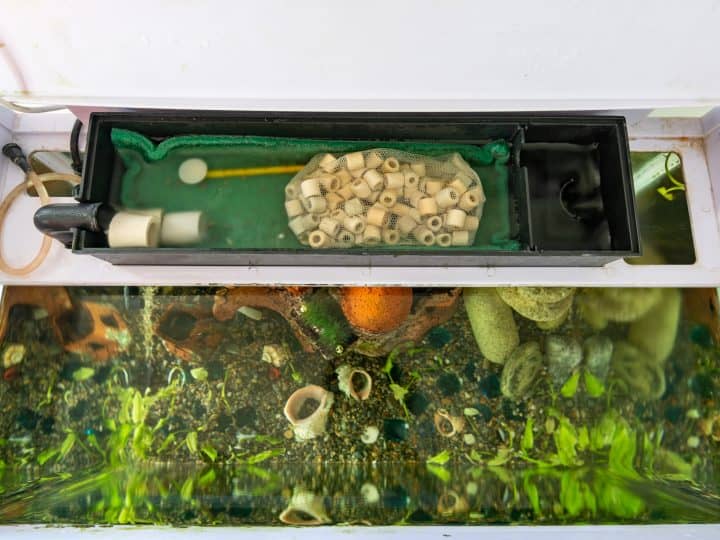Aquarium filters are important for a successful tank setup. You can scrub and change tank water yourself. But you can’t keep your aquarium free of toxins and other substances entirely on your own. This is where filters come in. A high-quality filtration device keeps your water odorless, clear and thriving for your pet.
Quick Answer
An aquarium filter uses a combination of mechanical, biological and chemical filtration to trap debris and remove toxins such as ammonia and nitrate. It will keep the aquarium parameters stable and habitable for your fish. They also create flow in the aquarium.
It is crucial that you know how a filter works, so you can choose the correct filter for your aquarium. You don’t want to overspend on a filter, but it needs to be able to do the job. The rest of the article will cover everything you need to know about filters and how they work.
The benefits of aquarium filters
Without a fully functioning filter, fish owners must constantly keep track of their fish’s water conditions. You would need to remove all the toxic ammonia yourself by replacing aquarium water with new water daily. No one wants that. Some pet owners opt for a simple tank set up without a filter. They think a small tank and some water are enough to sustain fish. This is not the case.
By getting a filter, you will reduce tank maintenance dramatically. You can change your water less often, once a week should do. And worry less about your fish’s health as the aquarium is WAY more stable because of a filter. When it comes to keeping fish, stability is key. Additionally, your pet will be exposed to many health benefits. Chiefly, they will be able to breathe better in fresh uncontaminated water.
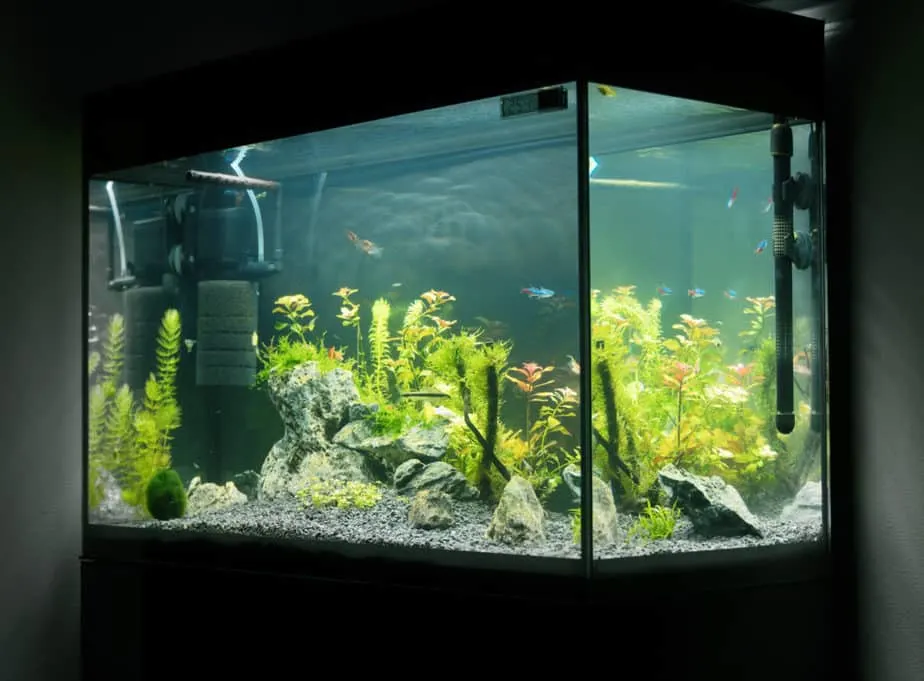
Fish left in unfiltered tanks are prone to health issues and disease over time. In the worst-case scenario, your fish can die. Tanks build up with all kinds of debris and toxins. Filters eliminate these issues. So, do yourself and your pet a favor and get a filter. However, a filter does not entirely replace doing maintenance, as all the debris that is caught in your filter has not been removed. You need to clean your filter once per month to completely remove all debris from the water column.
When you decide to get a filter for your pet. Make sure you get the right product. The fish filter market is full of options. Some types of filters will work great for your tank. Other filters might not suit your aquarium. In the next section of this article, we will go over the most popular types of filters that can be purchased. With this information, you can get the best filter.
Biological filtration (beneficial bacteria)
When looking at how filters function specifically, there are three types of filtration. The first type is biological filtration. Biological filtration gets rids of your fish’s waste by breaking down ammonia into nitrite and finally into nitrate. Tank waste comes from many sources, from food, bacteria, and even your fish. Toxic ammonia builds when these materials break down and when your fish defecates.
Beneficial bacteria are the essential helpers here. If you want to learn all about the nitrogen cycle, make sure you check out this article I have written earlier.
Your fish also produces this harmful toxin in another way. Every-time your fish breathes through their gills, they let out ammonia. If ammonia builds up too much in the tank your pet will die. Biological filtration will eliminate the toxins and create beneficial bacteria growth.
Filters with biological filtration help combat this problem. They nitrify ammonia from your fish by adding good bacteria to your tank. These bacteria will help eliminate waste along with filtering the surrounding water.
These beneficial bacteria are housed throughout your tank (on the glass, substrate, rocks, ornaments etc) but mainly in your filter. They grow on dedicated biological filter medium with a lot of surface, such as the bio balls in the picture below. Furthermore, they also grow on the sponges in your filter, also known as the mechanical filtration.
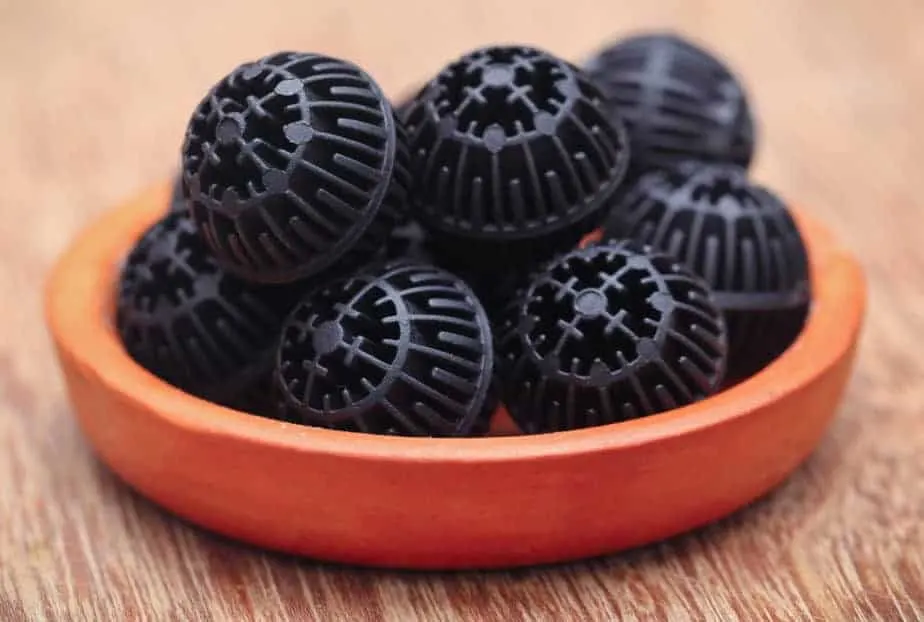
Mechanical filtration
Mechanical filtration is the second type of filtration you should know about. Luckily, this is a more straightforward process. Mechanical filtration devices act as a physical barrier to waste. Particles and other substances floating around in your tank get caught by the filter.
Specific materials help capture these impurities and trap them. Sponges are a popular option. Foam and other matting are used to confine waste as well. Often a filter contains multiple stages of mechanical filtration, where the biggest particles are caught by the first sponges, and the mesh of the next sponges keep getting finer and finer. Filter wool is often added in the last stage to trap even the smallest particles.
While this kind of filtering can seem simple, it is crucial. Mechanical filters trap decayed materials, but they don’t eliminate them. Make sure to clean your filter regularly. If you leave the trapped material in your device your fish’s health can suffer. I always say, out of sight is not out of your aquarium.
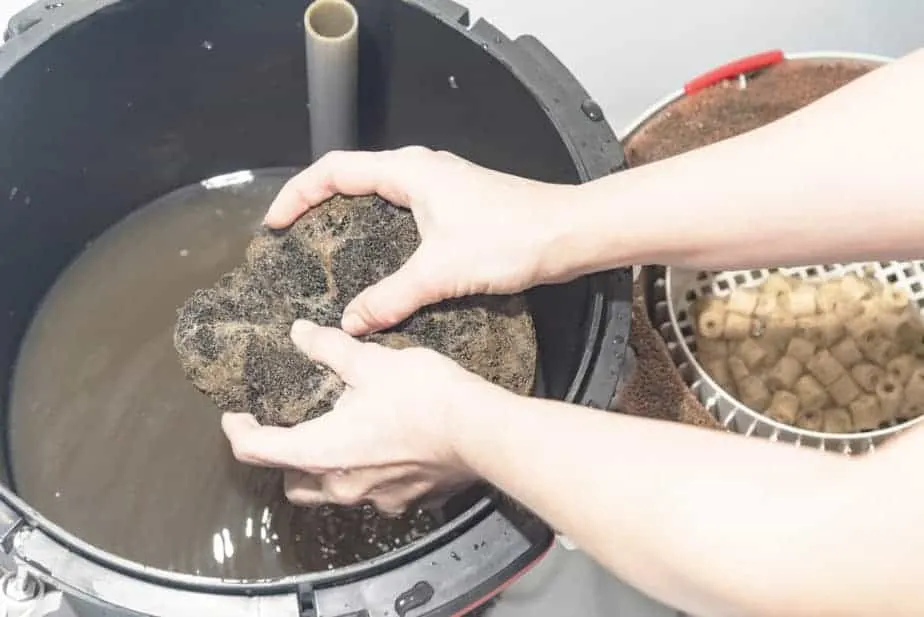
Clean your filter once a month, and do not rinse it using tap water. Instead, take a bucket of water from your aquarium and squeeze your sponges in that bucket a couple of times. It should not look brand new, to maintain the layer of beneficial bacteria.
Chemical filtration
The last kind of filtration is chemical filtration. Your tank water can harbor all sorts of chemicals. Chlorine is one example of this. Extra protein or nutrients can also build up in the water. Specific materials are used in chemical filtration which absorb these harmful particles.
What materials are used for absorption will depend on the filter. Many filters use carbon cartridges. With this media, chemical filters will absorb these particles and then diffuse them. This is done so chemicals don’t murk up your water. Odors and discolorations are usually eliminated with this kind of filtration as well.
A lot of tanks combine types of filtration. Some use two methods of filtration. More simple models will use one, these might not be entirely enough. The best filters will combine all three methods. Good filters will also cycle through the water in your tank to create water flow and oxygenation. Consider this when you go out and buy your filter.
Chemical filtration is the least important, and only having biological and chemical filtration can be enough. Keep in mind that you need to replace the active carbon that you use as chemical filtration occasionally, as it loses its power over time.
The different types of aquarium filters
When you are purchasing your first filter, the choices can seem endless. Stores and online shops have all kinds of models and devices. The sheer number of filters can seem confusing, especially for someone without any prior knowledge of filters. Top brands continue to offer products with innovations every year.
This results in a wide array of filter options. For experienced aquarium owners, this can be exciting. For novices, this is a great source of uncertainty. The sheer number of sizes, shapes, and forms of filters can be daunting. This next section will touch on the different types of filters you can buy.
Hang On Back filters
Every filter works uniquely. This gives products a chance to offer a distinct filtration experience. One common type of filter is a power filter. This is also known as a hang-on filter or hang-on-back (HOB) filter. Hang on filters are usually clipped on the side of your tank and use a few types of filtration. Sometimes they offer mechanical and chemical filtration. Other times they offer all three stages of filtration.
Hang on filter pack a lot of strength and efficiency in their models. If your fish lives in a big tank and needs stronger water current, try this out. If not, you might want to invest in something with less power. This way your fish won’t be disturbed by strong water currents.
Internal filters
Other types of filters include submersible filters, also called an internal filter. These types of filters go inside your tank completely. These models are good for smaller aquariums. They don’t create a ton of water flow, but they do create the right environment for smaller fish that like still waters.
Because internal filters are placed inside tanks, they can take up more room in an aquarium. So be mindful of tank space when you make your purchase. Usually, internal filters are discrete and compact though. You can also make adjustments for water flow if you want more water flow.
Canister filters
Canister Filters are another popular option. Like hang-on filters, they bring powerful filtration and water flow to aquariums. Canister filters sit outside or underneath your aquarium. These are not ideal products for small aquariums but work well in larger tanks. I personally am a big fan of canister filters, as you only have an intake and an output in your aquarium. The rest of the filter is hidden behind doors.
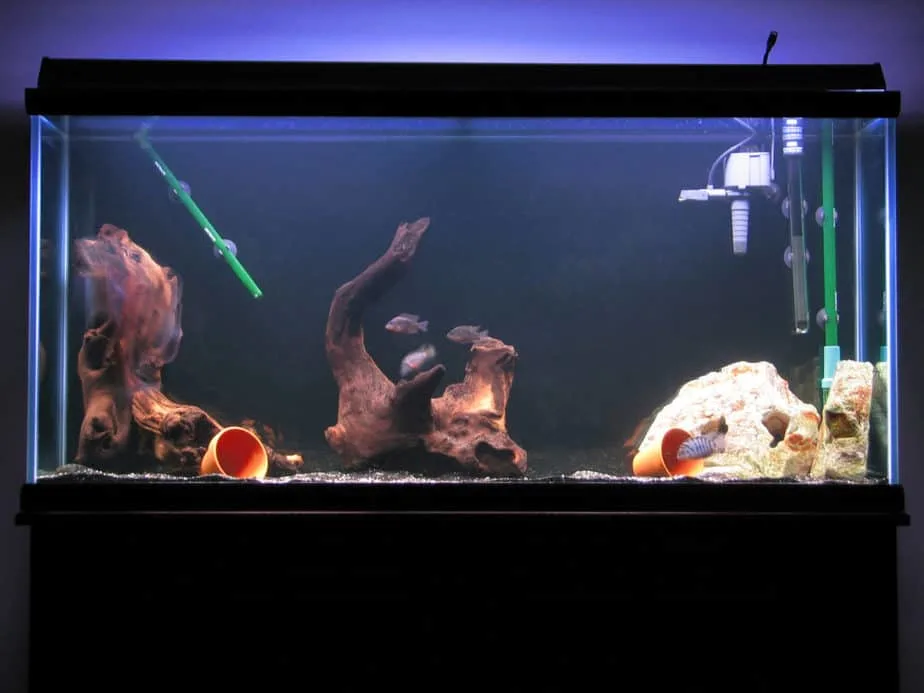
These canister filters can be great for large aquariums. They create the best water flow and cycles hundreds of gallons of water per hour. Canister filters also offer a lot of media flexibility. Any kind of cartridges or filter material can be added to them. There are many different ones out there, so make sure you look at the strength of the filter. You want to find a filter that is suitable for your aquarium size.
How you can choose the right filter
Each fish and tank have specific requirements. Consider this when you are choosing a filter. Some fish like low current water, other fish like stronger currents. Your best bet is to get a model with an adjustable setting.
You want to be able to change the flow of water to suit your fish. This is one of the most important features for your aquarium.
Furthermore, you don’t want to choose a model that is low power and won’t clean your tank enough. All filters should clean your tank well. Pick filters from top-rated brands. This way you know your aquarium is getting cleaned thoroughly.
Another feature you should be on the lookout for is simplicity. No one wants a filter that is difficult to setup. Get a filter that is easy to maintain and use. Filters should not be complicated. You want a model that will allow access to media cartridges. You should be able to change them fast.
Filters should also suit the size of the tank. You don’t need a high powered filtered for a two or three-gallon tank. Similarly, if you have a bigger tank you don’t want a low power filter. Getting the correct filter size will save you time and money. So, don’t choose indiscriminately.
Overall your filter should be convenient, efficient, and contain multiple methods of filtration. These are the qualities necessary for a great aquarium filter.

